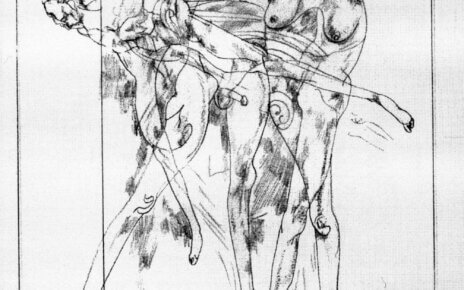Vice Provost for Graduate Studies and Professor of Biology Michael Palladino, Ph.D., is a part of a team of authors that published the twelfth edition of Concepts of Genetics in January 2018.
The book is used in over 250 different American colleges and universities every year, including Monmouth University, making it the second leading textbook in the field of genetics at the undergraduate level. According to Palladino, it is only surpassed in use by one authored by a Nobel Prize laureate.
Palladino was part of a co-authorship team that included lead author William S. Klug, Ph.D., of The College of New Jersey (TCNJ), Michael Cummings, Ph.D., from the Illinois Institute of Technology, Charlotte Spencer, Ph.D., from the University of Alberta, and Darrell Killian, Ph.D., of Colorado College. The textbook has been in publication since 1983 and Palladino has been contributing since the ninth edition of the text.
“Each of us [on the authorship team] works on different areas of expertise because it simply isn’t possible for any one person to stay current in all topics of genetics,” explained Palladino. “Almost every chapter has overlapping content from each of us and so one of the elements of textbook writing I love is collaborating with my co-authors.”
“Writing a textbook is a completely different beast from writing a primary research article or even a review article because you have to have a really broad sense of where the field is at,” said Cathryn Kubera, Ph.D. She stressed that textbook writing necessitates familiarity with new research and its implications for the field as a whole, while also requiring an author to be able to present the information in a way that makes it useful for learning.
For Palladino, his role as a contributor also presented an opportunity to work with one of his previous mentors at TCNJ, Klug. Klug followed Palladino’s professional career after TCNJ and after Palladino authored a biotechnology textbook, Introduction to Biotechnology, contacted him about contributing to Klug’s Concepts of Genetics. According to Palladino, Klug was interested in his research background and ability to articulate new ideas about genetics and related topics.
was responsible for several chapters based on recombinant DNA technology, genomic analysis, applications of genetic engineering and biotechnology, along with sex determination, sex chromosomes, and extranuclear inheritance. He also helped create online exercises featuring real databases in genetics and bioinformatics as a companion to the text called Exploring Genomics, while also including information about modern research data to help students see the real-life applications of knowledge in genetics.
Along with covering a comprehensive list of topics in genetics, Concepts of Genetics contains something that Palladino referred to as being wholly unique to the publication. Section 6 of the text is a group of abbreviated chapters that are an overview of more modern additions to the field. He listed topics like CRISPR-Cas, a gene editing tool with potential applications in gene therapy and embryo editing, genetically modified foods, and DNA forensics as just a few of the “hottest areas in genetics.”
“Having a Monmouth scientist being able to contribute to a solid piece of science work and distributing that on a national and international scale does really positive things for the perception of Monmouth and the work that’s going on here,” said Kubera, “Anytime you can contribute to a collaborative work in science is a great thing, and then being able to have something that’s broadly viewed by the scientific community [brings] recognition to both the author and also to the University and frames things in a much more positive light.”
“Knowing that professors in the School of Science are actively contributing to projects which impact the broader scientific community, such as this textbook, speaks to the character and caliber of our faculty,” said Nicole Sivetz, junior biology student. “Professors like Dr. Palladino strive to make meaningful contributions to science both on and off campus, and lead our students by example to remain current and impactful with their respective fields.”
“We publish new editions every three years and it takes 18-20 months to write and produce a new edition,” said Palladino. “Genetics is one of the most rapidly changing and expanding areas of research in biology – which makes this work fun and always stimulating and intellectually challenging to stay on top of the latest research.”
Palladino detailed that the preparations for the 13th edition have already begun with meetings in San Francisco involving the compilation of new scientific literature and subsequent drafting of new material. A team of artists are also involved with creating a set of figures to be used, while the authors also collaborate with various editors and a fact checking scientist to ensure that the new book maintains its quality.
“A good book is not an encyclopedia of facts – that is irrelevant for students,” explained Palladino. “We have also taken pride in focusing on how we know what we know about genetics through experimentation, and through our clarity of writing and the quality of our art helping students learn major concepts.”
“I think Dr. Palladino’s contribution was essential being that he is a well-respected and highly accomplished scientist, educator, and mentor,” said Sivetz. “He excels at introducing young scientists to the frontiers of research while also ensuring they are building a solid and essential foundation in genetics.”


